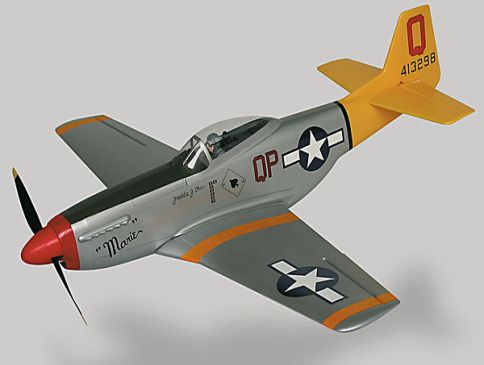Alfa Model P-51D Mustang
SGD 187.00
Alfa Model P-51D Mustang
The North American Aviation P-51 Mustang was a long-range single-seat fighter aircraft that entered service with Allied air forces in the middle years of World War II. The P-51 flew most of its wartime missions as a bomber escort in raids over Germany, helping ensure Allied air superiority from early 1944. It also saw limited service against the Japanese in the Pacific War. The Mustang began the Korean War as the United Nations' main fighter, but was relegated to a ground attack role when superseded by jet fighters early in the conflict. Nevertheless, it remained in service with some air forces until the early 1980s.
The Alfa Model P-51D Mustang has the following features:
- It is almost ready to fly: you just have to apply decals, install the propulsion unit and the RC equipment. You can utilise the kit's box as the transport and storage container for the finished model.
- The model is moulded from extruded polystyrene foam with a tougher surface layer, making the model more resistant to surface damage. All exposed places are also covered by additional plastic reinforcements. The strength/weight ratio of the model is high, therefore the danger of damage in normal operation is very low.
- When designing this model the maximum attention was devoted to its aerodynamic layout (e.g. the semi-symmetrical wing section, the symmetrical horizontal tail section were used), ensuring high aerodynamic finesse, with the resulting wide band of operational speeds and docile flying characteristics typical for much larger models.
- The range of proven power units offered enables to build a scale model of flight performance corresponding with that of the best slow flyers, as well as with the fully aerobatic models.
- To control the model you need the RC equipment suitable for controlling the slow-flyers - it would enable you to fly majority of the aerobatic figures (with the possible exception of those that require the rudder control).
| Weight: | 14.5000 |

 USD
USD
